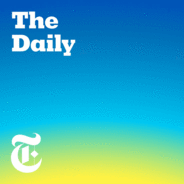Undetected for months, sophisticated hackers working on behalf of a foreign government were able to breach computer networks across a number of U.S. government agencies. It’s believed to be the handiwork of Russian intelligence.And this is far from the first time. Today, why and how such hacks keep happening and the delicate calculation that dictates how and if America retaliates.Guest: David E. Sanger, a national security correspondent for The New York Times. For an exclusive look at how the biggest stories on our show come together, subscribe to our newsletter. You can read the latest edition here.Background reading: In one of the most sophisticated and perhaps largest hacks in more than five years, email systems were breached at the Treasury and Commerce Departments. Other breaches are under investigation.The sophistication and scope of the attack has stunned experts. About 18,000 private and government users downloaded a Russian tainted software update — a Trojan horse of sorts — that gave its hackers a foothold into victims’ systems, according to SolarWinds, the company whose software was compromised.For more information on today’s episode, visit nytimes.com/thedaily
Subscribe today at nytimes.com/podcasts or on Apple Podcasts and Spotify. You can also subscribe via your favorite podcast app here https://www.nytimes.com/activate-access/audio?source=podcatcher. For more podcasts and narrated articles, download The New York Times app at nytimes.com/app.

Nachrichten
The Daily Folgen
This is what the news should sound like. The biggest stories of our time, told by the best journalists in the world. Hosted by Michael Barbaro, Rachel Abrams and Natalie Kitroeff. Twenty minutes a day, five days a week, ready by 6 a.m. Subscribe today at nytimes.com/podcasts or on Apple Podcasts and Spotify. You can also subscribe via your favorite podcast app here https://www.nytimes.com/activate-access/audio?source=podcatcher.
Folgen von The Daily
2691 Folgen
-
Folge vom 16.12.2020Hacked, Again
-
Folge vom 15.12.2020America’s First Coronavirus VaccinationsNorth Dakota and New Orleans have been hit particularly hard by the coronavirus.On today’s episode, we speak to health care workers in both places as they become some of the first to receive and administer the vaccine, and tap into the mood of hope and excitement tempered by a bleak fact: The battle against Covid-19 is not yet over. Guest: Jack Healy, a national correspondent for The New York Times. For an exclusive look at how the biggest stories on our show come together, subscribe to our newsletter. You can read the latest edition here.Background reading: Monday’s vaccinations, the first in a staggeringly complicated national campaign, were a moment infused with hope and pain for hundreds of America’s health care workers.Some of the very medical centers that have endured the worst of the coronavirus found the gloom that has long filled their corridors replaced by elation. The vaccine campaign, however, began on the same day that America surpassed 300,000 deaths from Covid-19.For more information on today’s episode, visit nytimes.com/thedaily Subscribe today at nytimes.com/podcasts or on Apple Podcasts and Spotify. You can also subscribe via your favorite podcast app here https://www.nytimes.com/activate-access/audio?source=podcatcher. For more podcasts and narrated articles, download The New York Times app at nytimes.com/app.
-
Folge vom 14.12.2020The U.S. Approves a VaccineThe Food and Drug Administration authorized Pfizer’s Covid-19 vaccine for emergency use on Friday, clearing the way for millions of highly vulnerable people to begin receiving the vaccine within days.The authorization is a historic turning point in a pandemic that has taken more than 290,000 lives in the United States. With the decision, the United States becomes the sixth country — in addition to Britain, Bahrain, Canada, Saudi Arabia and Mexico — to clear the vaccine. Today, we ask the science and health reporter Donald G. McNeil Jr. what might happen next.Guest: Donald G. McNeil Jr., a science and health reporter for The New York Times.For an exclusive look at how the biggest stories on our show come together, subscribe to our newsletter. You can read the latest edition here.Background reading: Pfizer has a deal with the U.S. government to supply 100 million doses of the vaccine by next March. Under that agreement, the shots will be free to the public.The vaccines are on their way, but experts still say a difficult winter of coronavirus infection and death lies ahead.For more information on today’s episode, visit nytimes.com/thedaily Subscribe today at nytimes.com/podcasts or on Apple Podcasts and Spotify. You can also subscribe via your favorite podcast app here https://www.nytimes.com/activate-access/audio?source=podcatcher. For more podcasts and narrated articles, download The New York Times app at nytimes.com/app.
-
Folge vom 13.12.2020The Sunday Read: 'Lovers in Auschwitz, Reunited'Amid the death and desperation of the Auschwitz concentration camp, two inmates, David Wisnia and Helen Spitzer, found love.On today’s episode, the story of how they found each other — first within the camp and again, seven decades later.This story was written by Keren Blankfeld and recorded by Audm. To hear more audio stories from publishers like The New York Times, download Audm for iPhone or Android. Subscribe today at nytimes.com/podcasts or on Apple Podcasts and Spotify. You can also subscribe via your favorite podcast app here https://www.nytimes.com/activate-access/audio?source=podcatcher. For more podcasts and narrated articles, download The New York Times app at nytimes.com/app.
